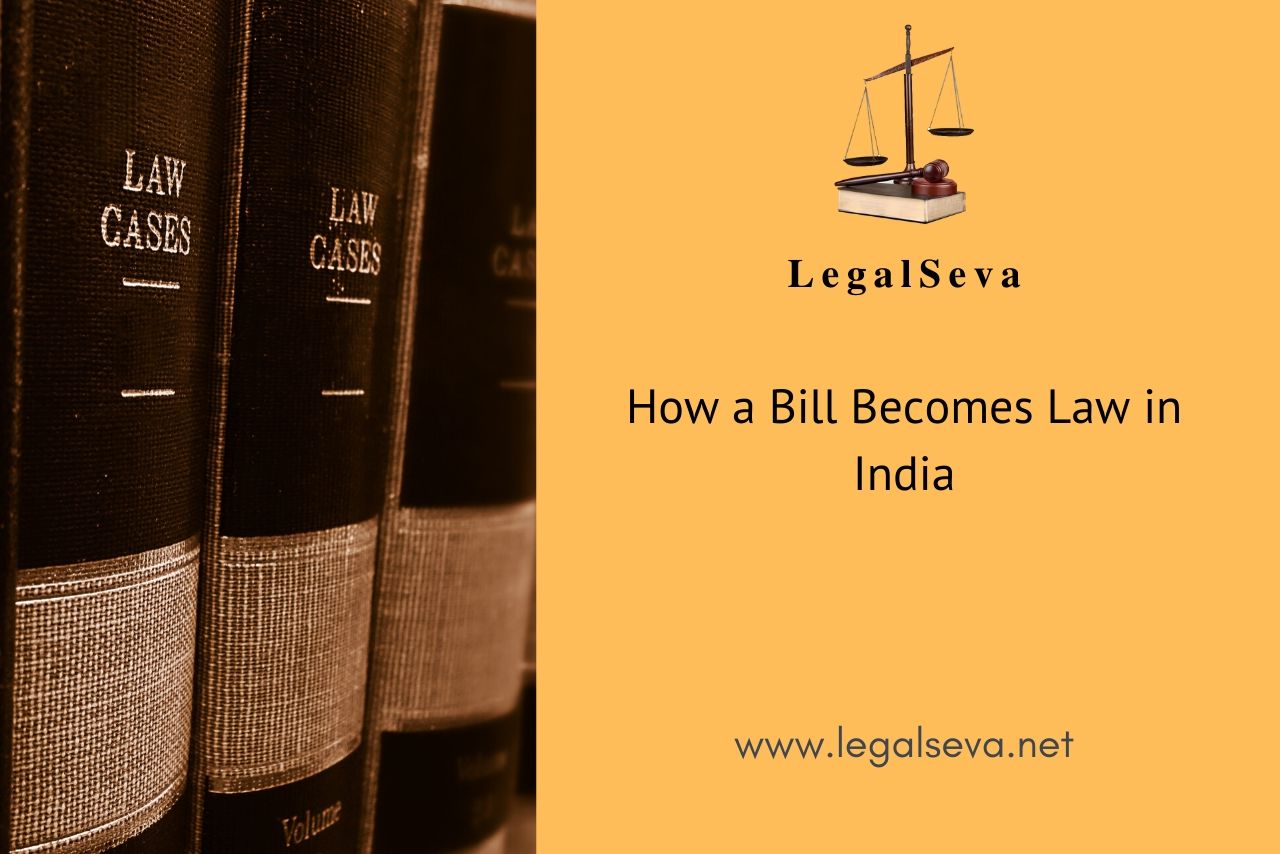Last Updated on March 28, 2024 by Satish Mishra
Post covers how a bill becomes a law in India. Once both the houses pass the bill, and president gives assent, bill becomes an Act. President can either give assent or hold bill.
If introduced by Minister then a Government Bill and in case of Member, Private Member’s Bill.
The best explanation to this, we can get only on the website of Sansad. Please read it here.
For a Bill to become to Act, it has to go through First Reading and Second Reading.
Process of How a Bill Becomes a Law in India
In India, we follow a Quasi-federal structure of Government.
To pass any Amendment Bill under Art 368 of constitution, majority of the total membership of the house, 2/3rd members should be present and vote. Federal and Judicial aspects of Constitution must be ratified by state legislatures. There is no provision of joint sitting of two houses. There can be no amendment to destroy basic structure and every amendment is subject to review of Supreme Court.
The most interesting amendment so far is 24th amendment; parliament in its constituent capacity cannot delegate its function of amending Constitution of India, to another legislature or to itself in its ordinary legislative capacity.
There are Total 3 lists on which Union, State and District can legislate. Out of list matters are residuary subject and dealt with respect to Art 245.
Union list- 100 items
State List- 61 items
Concurrent list- 52
A bill is a draft of the legislative proposal when passed in both the houses and given president assent becomes Act.
First Reading-
- Minister has to ask leave of the house to introduce the bill.
- First reading of the bill. Speaker decides whether to allow or invite debate or vote.
- Money bill is to be passed only in Lok Sabha. Chairman of Rajya Sabha decides whether the bill is finance bill or not.
- A bill can be published straight away in the Gazette of India. In such cases leave to introduce bill is not required.
- The bill is sent for Reference to Standing Committee that gives report about the bill.
Second Reading further has 2 stages.
First Stage.
Discussion on bill, mostly on underlying principle, whether Joint committee should be formed or not. Not advisable to move the motion for consideration of the bill.
Second Stage
Clause by Clause consideration of the bill as introduced or as reported by selected joint committee. Amendments to clause moved but not withdrawn are out to vote and then disposed of by the house. After the clauses, the schedules if any, clause 1, the enacting formula and the long title of bill have been adopted by the house. The second reading is deemed to be over.
Third Reading
Arguments either in support or rejection of the bill, without referring to the details thereof further than that are absolutely necessary. But if there is a tie, then the presiding officer will cast his vote.
Passing a bill
Quorum which is minimum one-tenth of the total members of a house, house suspended till there is quorum.
Bills taken up under legislative power of parliament are treated as passed as majority of members present at that time approved the bill, either by voting or voice vote. It is a right of member to demand voting instead of voice vote.
In case of constitutional amendment bill, two third of the total members present voted in favor of the bill with more than 50% of the total members of the house, are required as per Art 368.
Bill in the Other house
One house pass the bill, the other house repeats the same process without the introduction. If a bill is amended, it is sent to the first house again for approval. If the other house disagrees, it means both the houses have disagreed.
The other house may keep a money bill for 14 days and ordinary bill for 3 months without passing (or rejecting it). If it fails to return the bill within stipulated time, then the bill is deemed to be passed by both the houses and is sent for the approval of the president.
State Level– Not mandatory that a bill shall be passed by legislative council (if existing) per Articles 196 to 199. There is no provision of conducting joint session of both houses to pass a bill.
Bicameral Legislature- Lower house (Vidhan Sabha ) must pass. Upper house (Vidhan Parishad) is not required.
Unicameral- Vidhan Sabha (Not Vidhan Parishad)
Union Govt- Lok Sabha, Rajya Sabha and then the president assent.
Wikipedia also mentions nicely, lawmaking procedure in India.
Coming into force- Mostly the bills on becoming an Act comes with the date of enforcement or else when mentioned, has to be treated prospectively or retrospectively.
Also Read- GST Bill- All you need to know!
Difference between Ordinances and Act
When Parliament not in session, under compelling circumstances and the President is satisfied for the need of immediate action, he/she may promulgate such required ordinances under Article 123 of the Constitution. An ordinance has same force and effect as an act of Parliament. Every ordinance shall cease to operate if not passed by the Parliament before the expiration of six weeks from its reassembly. The President shall not issue any ordinance which needs an amendment to the Constitution or which violates the Constitution. When the state assembly is not in session, the Governor of a state can issue ordinances per Article 213 subject to the approval of the President.
It is very important to understand people’s mandate while deciding law making procedure in India.
You can also access the pdf book on this from the website of loksabhadocs.nic.in.
Hope it covers all you need to know about; how a bill becomes a law in India. Just for clarification there are 22 parts, 395 Articles, 8 schedules in Constitution of India and no new articles have ever been added to the constitution. It is just the additions in respective Articles that have been done and nothing else.

